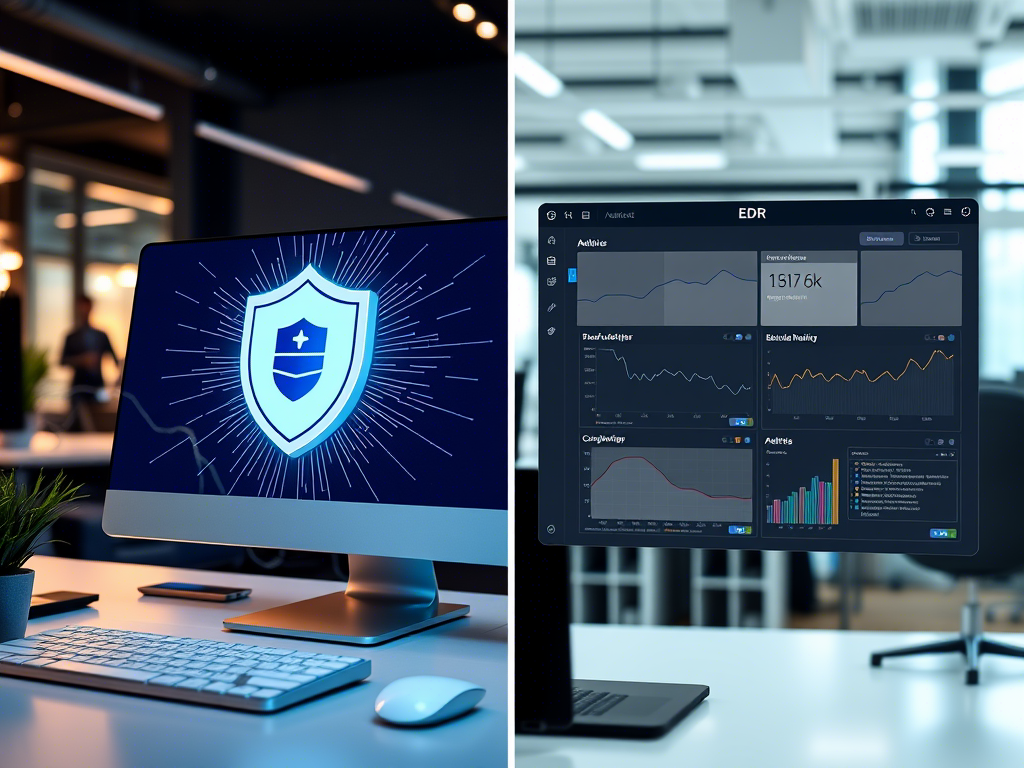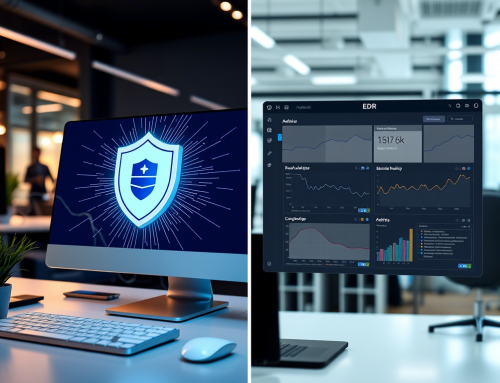Cyberattacks are becoming increasingly sophisticated, targeting vulnerabilities with precision and speed. For years, traditional antivirus solutions have been the backbone of endpoint protection. But as the cybersecurity landscape evolves, so do the tactics of attackers. Today, conventional antivirus software is struggling to keep pace with zero-day exploits and advanced threats. Enter Endpoint Detection and Response (EDR), the next line of defense, and perhaps the future of endpoint security.
In this blog, we’ll explore why signature-based antivirus solutions fall short in combating modern threats and how EDR rises to the challenge with behavior-driven detection. By the end, you’ll understand why it may be time to upgrade your endpoint security strategy.
The Problem with Traditional Antivirus
For decades, antivirus software has relied heavily on signature-based detection. But what does that mean, and why is it not enough anymore?
How Signature-Based Detection Works
Traditional antivirus tools operate by detecting known patterns or “signatures” in malicious files. When a file matches a database of suspicious signatures, it gets flagged and quarantined. This strategy worked exceptionally well in an era when malware evolved slowly and attacks were less sophisticated.
However, modern threats have outgrown this method. Here’s why signature-based detection is falling behind:
– Zero-Day Exploits: Cybercriminals exploit vulnerabilities that vendors are unaware of, making signature databases irrelevant in the face of these unknown threats.
– Polymorphic Malware: Modern malware can modify its code to avoid detection, rendering signatures ineffective.
– Sophisticated Attacks: Hackers now use complex, multi-vector attacks that traditional antivirus cannot analyze comprehensively.
The result? Relying purely on antivirus creates significant blind spots in your security strategy, leaving your organization vulnerable to evolving threats.
EDR – A New Standard for Endpoint Security
Given the limitations of traditional antivirus tools, a more proactive and intelligent solution is necessary. This is where Endpoint Detection and Response (EDR) steps in.
What is EDR?
EDR is an advanced cybersecurity technology designed to detect, investigate, and respond to threats on endpoints (like laptops, workstations, and servers). Unlike antivirus software, which focuses on analyzing files, EDR emphasizes behavior and activity across an organization’s endpoints.
Instead of relying solely on static databases of known threats, EDR uses real-time monitoring and advanced analytics to identify malicious patterns and suspicious activity.
How EDR Detects Threats with Behavior-Based Analysis
Behavior-based analysis means that EDR looks beyond whether a file appears malicious. Instead, it examines what the file or process is doing.
For example, it might flag a program that suddenly encrypts large numbers of files (possible ransomware) or a process that attempts to modify user access privileges without proper authorization. These activities are telltale signs of potentially harmful actions—even if the program in question has no known signature of malicious intent.
EDR systems continuously monitor and gather data, meaning they detect anomalies early in their lifecycle before they cause significant harm.
How EDR Works in Real Life
To understand why EDR is game-changing, it helps to look at how it performs in real-world scenarios.
Scenario 1 – Unknown Malware
A software engineer innocently downloads what appears to be a PDF attachment. The file contains malware that has never been seen in the wild before, so it doesn’t match any antivirus signature database.
An EDR system would flag this file not because of its appearance but because of its behavior. For instance, it would detect the malware trying to access sensitive directories or modify critical system files, and alert the security team before significant damage occurs.
Scenario 2 – Privilege Escalation
A user account displays suspicious activity by attempting to access administrator-level controls it doesn’t ordinarily require. Traditional antivirus may not detect such behavior since no files are exchanged or executed. However, EDR flags this anomaly as an indicator of a potential insider threat or breached credentials, prompting further investigation.
Scenario 3 – Ransomware Attack
A ransomware strain infiltrates a network and begins encrypting files rapidly. An antivirus tool might catch the malware after it has been identified in global databases, but only after the damage is done. EDR, on the other hand, will detect the unusual behavior of bulk encryption and stop the process before the ransomware achieves its goals.
These examples demonstrate that EDR is not reactive; it is proactive. It continuously monitors your endpoints to keep you one step ahead of attackers.
Moving Beyond Antivirus to Comprehensive Security
The gap between traditional antivirus solutions and modern threats grows wider every day. Relying purely on signature-based detection leaves your organization exposed to zero-day exploits, polymorphic malware, and sophisticated, multi-stage attacks.
EDR bridges that gap. By monitoring behavior, identifying anomalies, and providing actionable insights, EDR systems offer robust, future-focused endpoint protection.
Why Your Business Needs EDR
- Real-Time Threat Detection: Identify attacks before they escalate.
- Proactive Response: Stop malicious activity in its tracks to prevent damage.
- Enhanced Analysis: Investigate and learn from flagged actions to improve future defenses.
- Adaptability: Detect threats that traditional methods miss, including zero-day exploits.
If your security strategy still relies exclusively on antivirus software, it’s time to rethink your approach. Consider implementing EDR to stay ahead in a constantly evolving cybersecurity landscape.
Take Action to Future-Proof Your Security
EDR is no longer just a nice-to-have. It’s an essential tool for protecting endpoints against the growing sophistication of cyberattacks. Traditional antivirus solutions may have served us well in the past, but the future of endpoint security lies in intelligent, behavior-driven detection.
If you’re ready to strengthen your defenses and move beyond outdated antivirus programs, now is the time to explore EDR capabilities.





